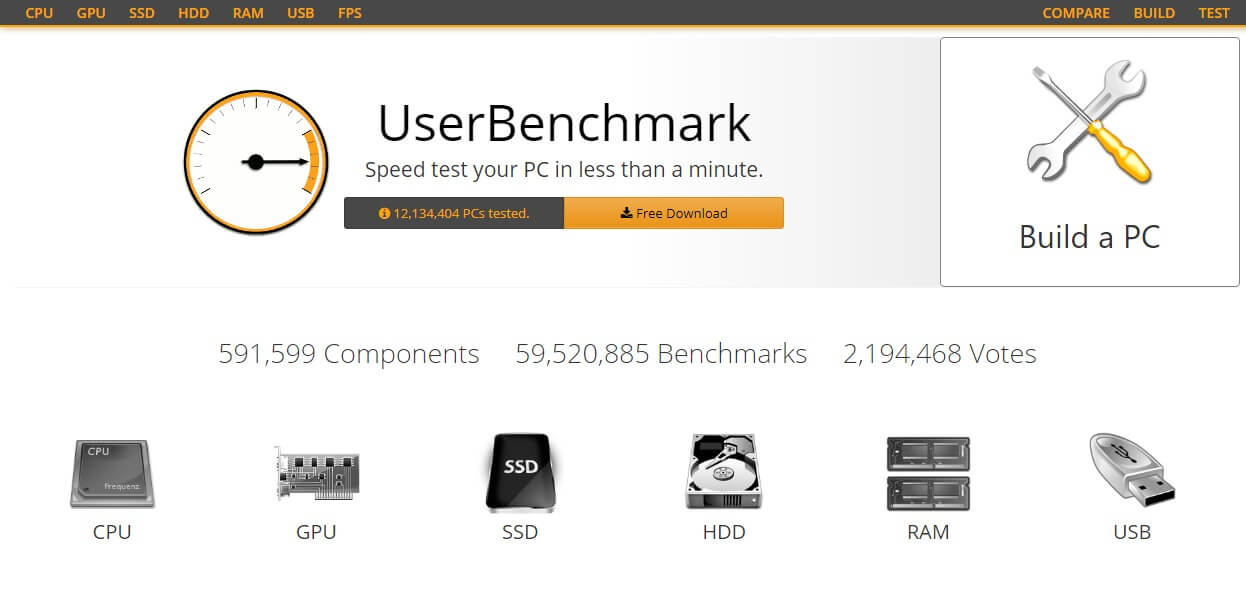

Here is a partial list of common challenges: Interpretation of benchmarking data is also extraordinarily difficult. Challenges īenchmarking is not easy and often involves several iterative rounds in order to arrive at predictable, useful conclusions.
#USER BENCHMARK FULL#
Software can have additional features specific to its purpose, for example, disk benchmarking software may be able to optionally start measuring the disk speed within a specified range of the disk rather than the full disk, measure random access reading speed and latency, have a "quick scan" feature which measures the speed through samples of specified intervals and sizes, and allow specifying a data block size, meaning the number of requested bytes per read request.

If performance is critical, the only benchmark that matters is the target environment's application suite.įeatures of benchmarking software may include recording/ exporting the course of performance to a spreadsheet file, visualization such as drawing line graphs or color-coded tiles, and pausing the process to be able to resume without having to start over.

Ideally benchmarks should only substitute for real applications if the application is unavailable, or too difficult or costly to port to a specific processor or computer system. Taken together, these practices are called bench-marketing. They also have been known to mis-represent the significance of benchmarks, again to show their products in the best possible light. Manufacturers commonly report only those benchmarks (or aspects of benchmarks) that show their products in the best light. Given the large number of benchmarks available, a manufacturer can usually find at least one benchmark that shows its system will outperform another system the other systems can be shown to excel with a different benchmark. Nevertheless, CPUs with many execution units often complete real-world and benchmark tasks in less time than the supposedly faster high-clock-rate CPU. Benchmarks are now regularly used by compiler companies to improve not only their own benchmark scores, but real application performance.ĬPUs that have many execution units - such as a superscalar CPU, a VLIW CPU, or a reconfigurable computing CPU - typically have slower clock rates than a sequential CPU with one or two execution units when built from transistors that are just as fast. However, such a transformation was rarely useful outside the benchmark until the mid-1990s, when RISC and VLIW architectures emphasized the importance of compiler technology as it related to performance. For instance, during the 1980s some compilers could detect a specific mathematical operation used in a well-known floating-point benchmark and replace the operation with a faster mathematically equivalent operation. Prior to 2000, computer and microprocessor architects used SPEC to do this, although SPEC's Unix-based benchmarks were quite lengthy and thus unwieldy to use intact.Ĭomputer manufacturers are known to configure their systems to give unrealistically high performance on benchmark tests that are not replicated in real usage.
#USER BENCHMARK HOW TO#
Running this much smaller snippet on a cycle-accurate simulator can give clues on how to improve performance. For example, if a benchmark extracts the key algorithms of an application, it will contain the performance-sensitive aspects of that application. While application benchmarks usually give a much better measure of real-world performance on a given system, synthetic benchmarks are useful for testing individual components, like a hard disk or networking device.īenchmarks are particularly important in CPU design, giving processor architects the ability to measure and make tradeoffs in microarchitectural decisions. Application benchmarks run real-world programs on the system. Synthetic benchmarks do this by specially created programs that impose the workload on the component. See BogoMips and the megahertz myth.īenchmarks are designed to mimic a particular type of workload on a component or system. For example, Pentium 4 processors generally operated at a higher clock frequency than Athlon XP or PowerPC processors, which did not necessarily translate to more computational power a processor with a slower clock frequency might perform as well as or even better than a processor operating at a higher frequency. Therefore, tests were developed that allowed comparison of different architectures. 6.1 Industry standard (audited and verifiable)Īs computer architecture advanced, it became more difficult to compare the performance of various computer systems simply by looking at their specifications.


 0 kommentar(er)
0 kommentar(er)
